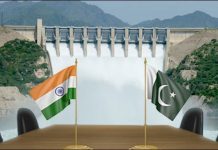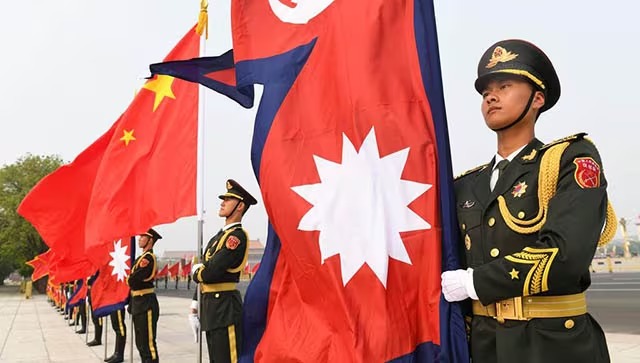The relationship between Nepal and China has seen many ups and downs ever since the two nations established diplomatic ties in 1955. While Nepal accepted Tibet’s accession to China in 1956, and also ratified the Treaty of Peace and Friendship in 1960, the Chinese were seen to enhance the diplomatic ties for fostering strategic anti-Indian sentiment within the Nepalese government.
It is well documented that in order to establish its hegemony in the South Asian region, China has been engaging in a protracted game to subdue and take over the smaller and weaker nations through its “neo-colonialism tactics”. It sees the world as a system of concentric circles of authority, with itself at the centre. This thought process is an outcome of what many analysts call China’s “Middle Kingdom” complex. China has adopted a revisionist approach by undermining the current rule-based international system. It is bullying other nations. It primarily uses debt traps as the main tool to control the essential strategic assets of nations resulting in depletion of their sovereignty and territorial integrity.
Kathmandu has been gradually becoming a victim of Beijing’s hegemonic plan. China has made large infrastructure investments in Nepal, including the Pokhara International Airport, increasing the Himalayan country’s dependence on Chinese funding. China is currently Nepal’s biggest creditor, and these loans have nefarious intentions concealed within them. It follows the traditional Chinese debt-trap diplomacy strategy, as demonstrated in countries like Sri Lanka and Pakistan. It fits nicely with China’s Salami Slicing strategy to take control of these countries’ territorial rights to critical vital areas after entangling them in its web of debt.
Nepal is now a part of China’s expansive Belt and Road Initiative (BRI). Beijing has inked a number of BRI-related agreements in an effort to strengthen its ties with Nepal and widen the gap between Kathmandu and Delhi. However, even if things may appear to be going well on the surface, there are some major, deeply-rooted problems between China and Nepal that have infringed on the country’s territorial, cultural and political integrity. While signing documents that establish economic and trade relations, both countries frequently run into difficulties in finding solutions to specific problems.
Nepal has seen a steep rise in anti-China sentiment and the people have started to develop a disliking for the northern neighbour. Often, many activist groups have taken out protest marches voicing their concerns over the Chinese expansionist tactics. Since 2022, many groups have taken to the streets to protest against its government’s policy to sell off the country to the Chinese government and companies. There is clear danger that Nepal might again get pushed into another civil war.
In recent days, China’s Ambassador to Nepal Chen Song has been under a significant amount of diplomatic and media scrutiny, because of a series of comments on Nepal’s internal issues as well as its relations with India.
To even a casual follower it is clear that China’s relations with Nepal have faced growing strain in recent months due to a combination of factors, including China’s failure to make meaningful progress on BRI projects in Nepal, failed attempts at political interference and an unwillingness in Beijing to accept terms which would be sustainable for Kathmandu. By using selective data, without adequate context, Chen tried to deride Nepal’s electricity exports to India — which have been a source of significant pride to Nepal.
According to recent reports in the Nepali media, in the last decade, installed hydropower production in Nepal has increased from 1,050 MW in 2012 to 2,700 MW in 2023, and this is expected to increase to 9,000 MW in the next 10 years as 235 hydropower plants are still under construction. Accordingly, India has agreed to buy in excess of 10,000 MW from Nepal over the next decade, in order to ensure the long term economic sustainability of these projects.
In the last fiscal alone India has procured electricity worth over Rs 1,000 crore from Nepal, and this figure is likely to grow steadily in the near future. In contrast, Nepal has been negotiating unsuccessfully with China since 2018 to develop a cross border 400KV transmission line. Moreover, with China planning its own mega-hydropower projects in Tibet, it is not likely to import electricity from Nepal and may rather want to export it. This may well explain the continued and unexplained delay of the 756-Megawatt Tamor Hydropower Project, agreed upon in 2019, as a joint venture between Nepal and China. Maybe the Ambassador was making it clear to Kathmandu that Beijing is only interested in projects which serve its own purposes.
Another significant area where the Nepal-China relationship was expected to thrive was infrastructure development, particularly through China’s BRI. However, despite Nepal becoming a signatory to the BRI in 2017, progress on the promised projects has remained stagnant. This includes crucial infrastructure projects like the upgradation and repair of highways and the development of economic corridors. Ambassador Song also recently claimed that the newly inaugurated Pokhara International Airport was built under the BRI framework. This subsequently caused significant embarrassment to Beijing when the Nepali government pointed out that the airport was not included in the BRI agreement but was from a bilateral arrangement that predated the BRI. At present, it is reported that none of the nine BRI projects in Nepal have seen any headway.
Nepal is seeking economic investment which can help deliver sustainable economic growth, with no geo-political strings attached. In the half decade since promising transformation through BRI, the CCP has done virtually nothing to help Nepal’s economy. To add insult to injury, the incumbent CCP ambassador has taken to ‘schooling’ the Nepal government on what it needs to do. Before Prachanda’s visit to Beijing in September, Nepalese Foreign Minister made Kathmandu’s foreign policy clear — that the government is “committed to strengthening cordial relations with friendly countries, especially with the neighbours” and that ideological and psychological grounds should not be foundation of one’s foreign relations but rather “promoting national dignity and strengthening national unity and guided by national interest and mutual benefits” should be the basis of Nepal’s foreign relations.
The much-anticipated visit resulted in signing of 12 agreements between Nepal and China, seven of them being MoUs to enhance bilateral cooperation in areas such as trade, investment, inter-country road connectivity and information technology. BRI was one of the top agenda of Prachanda’s Beijing trip. In fact, Prachanda, in a seminar conducted on the occasion of marking 10th anniversary of the BRI, even reiterated that BRI implementation would be given top priority. The joint statement released during his Beijing visit “expressed their commitment to accelerate the consultations to finalise the text on the BRI Implementation Plan at an early date.”
However, the lack of document finalisation with respect to BRI implementation, six years after being a signatory reflects BRI’s failure in Nepal. Financing of BRI projects, considering the debt trap situation witnessed in Sri Lanka as well the growing trade deficit with China, continues to be a major concern for Nepal while Nepal’s engagement with the United States through the Millennium Challenge Corporation (MCC) compact in 2022 is a concern for China.
This move may be seen as a diversification of Nepal’s international partnerships, potentially reducing its dependence on China. Moreover, Nepal’s reluctance to take loans and preference for grants under BRI reflects its caution of falling under a Chinese debt-trap under the garb of BRI. Thus from China’s perspective Prachanda’s visit has not yielded the desired results. Meanwhile, the complexity of BRI and its effect on bilateral relations between Nepal and China need to be monitored carefully. The road ahead for both isn’t without bumps.







































